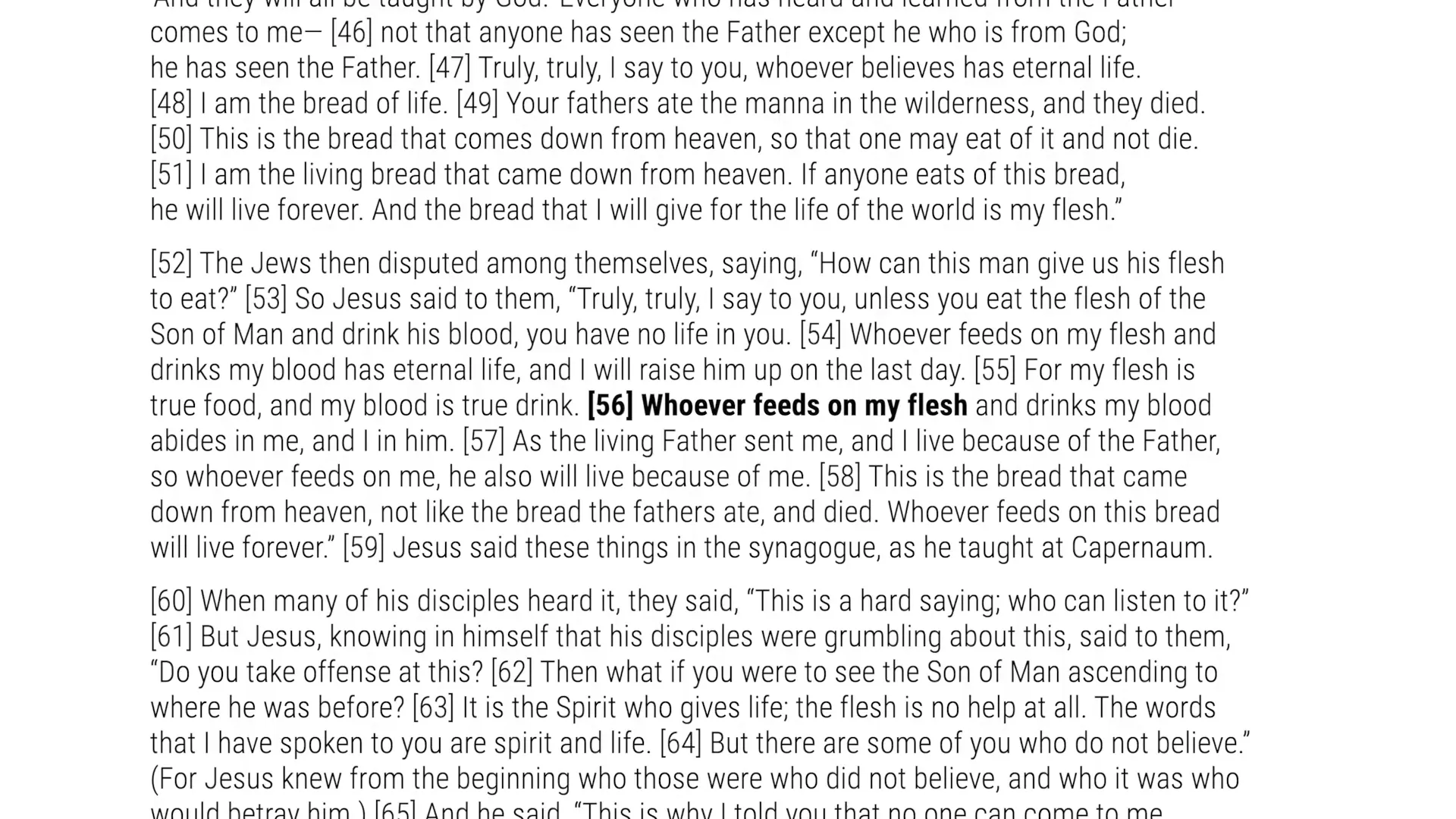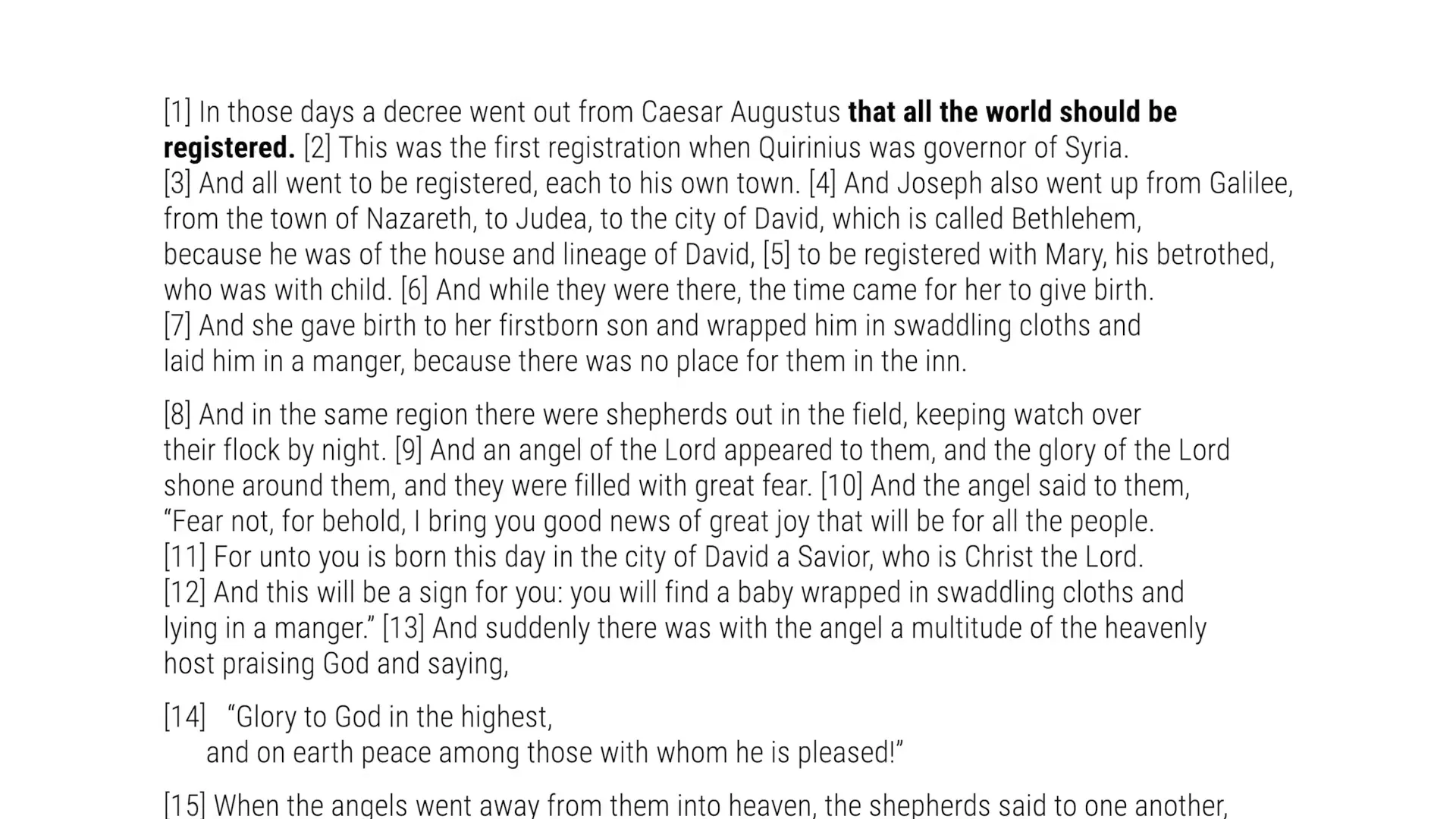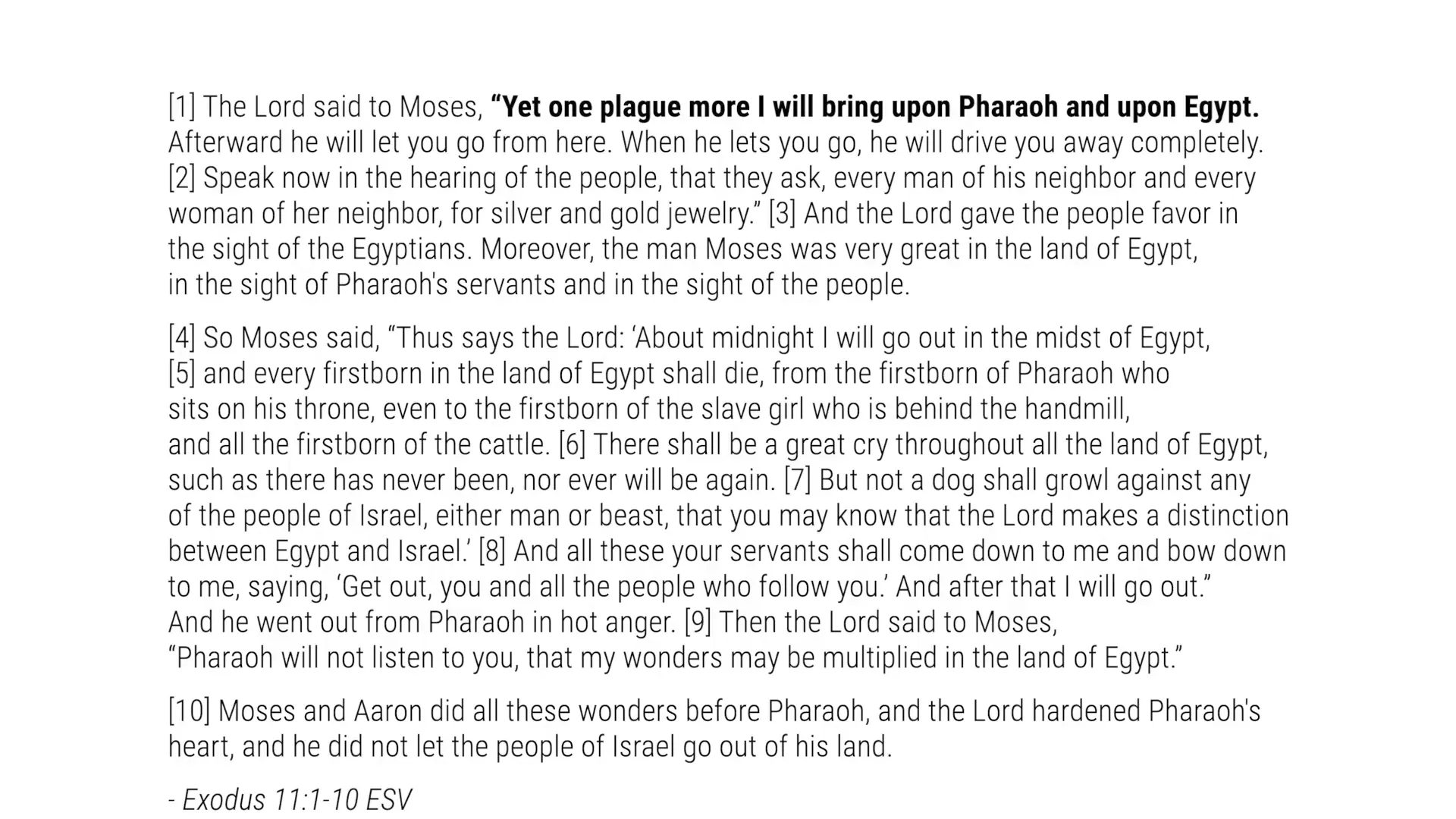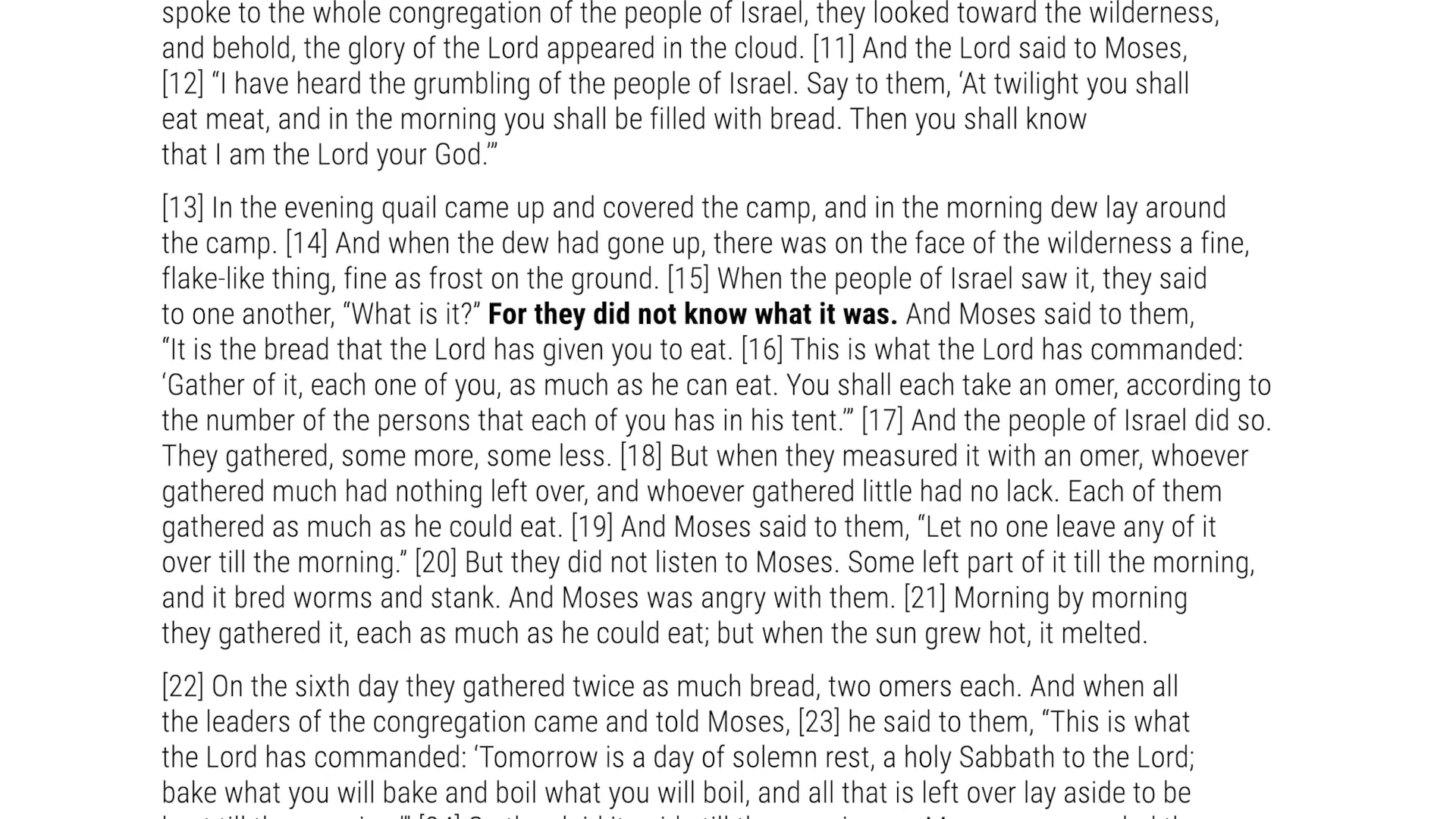In this in-depth exploration, we dive into one of the most profound and debated teachings of Jesus recorded in John chapter 6. The phrase, “unless you eat the flesh of the Son of Man and drink his blood, you have no life in you,” has sparked centuries of theological discussion, division, and reflection among Christians worldwide. But what does it truly mean? Is Jesus speaking literally, or is this a metaphor? As the creator of this content, I want to walk you through the biblical text, the historical context, and the various interpretations, so that together we can better understand this vital teaching.

Table of Contents
- The Importance of This Teaching
- Setting the Stage: Jesus’ Teaching in Capernaum
- The Bread from Heaven: Manna and Jesus
- The Feeding of the Five Thousand and Jesus’ Teaching at Capernaum
- Jesus as the Bread of Life
- The Controversy: Eating Flesh and Drinking Blood
- Spirit and Flesh: Clarifying the Metaphor
- Common Arguments and Misinterpretations
- The Response of the Disciples
- Exegesis vs. Isegesis: Reading the Text Right
- Why Does This Matter?
- Looking Ahead
- Frequently Asked Questions (FAQ)
The Importance of This Teaching
Jesus emphatically states, “Truly, truly I say to you, unless you eat the flesh of the Son of Man and drink his blood, you have no life in you.” This is not a casual remark but a vital spiritual truth. According to Jesus, this is absolutely necessary for life. No pressure, right? If you believe in Jesus and want to have life in you, this teaching is essential. Both sides of the Christian debate agree on the importance of this statement, even though they disagree on its meaning.
There are two main positions:
- Side A: Jesus meant for people to literally eat His actual flesh and drink His actual blood.
- Side B: Jesus was speaking figuratively or metaphorically, not literally.
It’s important to note that these two views are mutually exclusive. Both cannot be correct simultaneously. One side is right, the other is wrong. This makes understanding this teaching all the more crucial.
Setting the Stage: Jesus’ Teaching in Capernaum
To grasp the full meaning, we need to look at the broader context of Jesus’ teaching, specifically in Capernaum, as recorded in John chapter 6. But before we get there, let’s consider the timeline and some foundational background.
Jesus’ Birth and Early Life
Jesus was born in Bethlehem, which in Hebrew means “house of bread.” This is a significant detail because Jesus later refers to Himself as the Bread of Life. As the angel announced to the shepherds, Jesus came as a Savior, wrapped in swaddling clothes and lying in a manger—a feeding trough for animals.

While Jesus’ flesh was literally in a container used for animal feed, the Bible does not explicitly say whether His flesh was edible food in a literal sense at this point. However, this foreshadows the teaching He would give later about being the bread that came down from heaven.
John the Baptist’s Testimony
John the Baptist called Jesus the Lamb of God who takes away the sin of the world (John 1:29). This title is rich with symbolism, recalling the Old Testament lamb used in the Passover ceremony, which we will discuss shortly. John bore witness to Jesus as the Son of God, marking Him as the divine Lamb sent for salvation.
The Old Testament Passover: Eating the Lamb
In the days of Moses, God instituted the Passover to save the Israelites from the final plague in Egypt—the death of the firstborn. They were commanded to take a lamb without blemish, kill it, and put its blood on their doorposts. They were to eat the lamb’s flesh roasted that night, along with unleavened bread and bitter herbs.

This was a literal eating of the lamb’s flesh and applying its blood as a sign of protection. The blood marked the houses so that the angel of death would pass over them. This event is foundational because it prefigures Jesus as the ultimate Lamb whose flesh and blood bring salvation.
The Bread from Heaven: Manna and Jesus
After their escape from Egypt, the Israelites journeyed through the wilderness where God provided manna, bread from heaven, to sustain them daily. This miraculous provision was essential for their survival, but the Bible notes that those who ate manna eventually died.

Jesus draws a parallel between this manna and Himself. In John 6, He contrasts the bread that perishes with the bread that endures to eternal life. He claims to be the true bread from heaven, the Bread of Life, who gives eternal life to those who partake.
The Feeding of the Five Thousand and Jesus’ Teaching at Capernaum
One day, a large crowd followed Jesus because of the signs He performed. Jesus asked Philip where they could buy bread to feed the crowd. Andrew, another disciple, mentioned a boy with five barley loaves and two fish. Jesus blessed the food, and miraculously, it fed about five thousand men, with leftovers filling twelve baskets.

The next day, the crowd sought Jesus in Capernaum, where He began teaching profound spiritual truths:
- They were seeking Him not because they saw signs but because they ate their fill of the loaves.
- Jesus told them not to work for the food that perishes but for the food that endures to eternal life, which He, the Son of Man, will give.
- The work of God is to believe in Him whom He has sent.
- Jesus declared, “I am the bread of life.”
These teachings establish the importance of spiritual nourishment beyond physical sustenance.
Jesus as the Bread of Life
Jesus made it clear that He is the true bread from heaven that gives life to the world. When the crowd asked for this bread always, He responded with a startling claim:
“I am the bread of life. Whoever comes to me shall not hunger, and whoever believes in me shall never thirst.”
Yet, despite seeing Him, many did not believe. Jesus emphasized that belief is essential to receiving eternal life. This belief involves more than physical presence or curiosity; it is a deep, spiritual trust in Him.
The Controversy: Eating Flesh and Drinking Blood
Jesus then said something that caused confusion and dispute among His listeners:
“Unless you eat the flesh of the Son of Man and drink his blood, you have no life in you.”
He explained further that His flesh is true food and His blood is true drink. Whoever feeds on His flesh and drinks His blood abides in Him, and He in them. This is the bread that came down from heaven, unlike the bread the ancestors ate and died.

The Jews began to argue among themselves, questioning how Jesus could give them His flesh to eat. This statement was shocking and even crude in its graphic imagery. Yet Jesus did not back down but reinforced the necessity of this spiritual feeding.
Spirit and Flesh: Clarifying the Metaphor
Jesus made a distinction between spirit and flesh:
“It is the spirit that gives life; the flesh is of no avail. The words I have spoken to you are spirit and life.”
This verse (John 6:63) is often cited by those who argue that Jesus was speaking metaphorically about belief rather than literal eating. However, a careful reading shows that “spirit” and “flesh” are categories that can overlap with physical and spiritual realities. For example, Jesus Himself is both physical and spiritual.
Moreover, the Bible contains many examples of things of the flesh that are not physical, such as jealousy or strife, and spiritual things that are physical, such as Jesus’ resurrection body.
Common Arguments and Misinterpretations
Many pastors and teachers on the metaphorical side (Side B) argue that Jesus could not have meant literal eating and drinking because:
- Verse 63 says the flesh profits nothing and Jesus speaks spiritually.
- Eating flesh and drinking blood sounds like cannibalism, which they find absurd.
- They interpret “I will give my flesh” as “I will give my life,” referring to the crucifixion.
- They emphasize belief as the “eating” Jesus refers to.
However, these arguments often involve adding words to the text, ignoring context, or conflating categories. For example, the Bible never says “I will give my life” in John 6:51 but says “I will give my flesh.” Also, the life of the flesh is in the blood (Leviticus 17:11), so if Jesus was referring to giving His life, logically He would mention His blood as well.
Furthermore, the Bible never explicitly states that the food Jesus gives is not physical or only spiritual. Both spiritual and physical realities can coexist in biblical truth.
The Response of the Disciples
Jesus knew that many of His disciples found this teaching difficult. Some even turned away and no longer followed Him. When He asked the twelve if they would also leave, Peter responded:
“Lord, to whom shall we go? You have the words of eternal life. We have come to believe and know that you are the Holy One of God.”
Peter’s declaration shows that true discipleship involves accepting Jesus’ words, even when they are hard to understand.
Exegesis vs. Isegesis: Reading the Text Right
One of the key points in understanding this passage is the difference between exegesis and isegesis. Exegesis means carefully interpreting the text to understand what it actually says, while isegesis means reading one’s own ideas into the text.
Jesus introduced the concept of a food that endures to eternal life, which He would give. This food is later defined as His flesh. To properly understand this teaching, we must accept the definitions Jesus provides and apply them consistently throughout the passage.
Ignoring the beginning of the discourse or inserting one’s own categories leads to misunderstanding. We should respect the author’s original intent and categories.
Why Does This Matter?
This teaching is not just theological trivia; it is foundational to Christian faith and life. Jesus said you have no life in you unless you eat His flesh and drink His blood. That’s a life-or-death statement. The way we interpret this affects how we understand salvation, communion, and our relationship with Christ.
Whether you lean toward a literal or metaphorical understanding, it is vital to test all teachings against Scripture and seek the truth diligently. Blindly trusting pastors or traditions without examining the Bible can lead to error.
Looking Ahead
This is just the first part of a larger discussion. Future explorations will delve deeper into the theological, historical, and scriptural nuances of this teaching, including the Last Supper, the Eucharist, and the implications for Christian living.
Frequently Asked Questions (FAQ)
Q: Did Jesus really mean that we should eat His literal flesh and drink His literal blood?
A: The passage can be understood literally or figuratively. Jesus uses graphic and explicit language, and some Christians interpret this as a literal reference to the Eucharist or Communion. Others see it as metaphorical, emphasizing faith and spiritual union with Christ. The debate is ongoing, but the passage’s importance is universally acknowledged.
Q: How does this teaching relate to the Old Testament Passover?
A: Jesus is often identified as the Lamb of God, paralleling the Passover lamb whose blood saved the Israelites. Just as the Israelites ate the lamb and were spared death, Jesus’ flesh and blood are seen as providing spiritual life and salvation.
Q: What does Jesus mean by “the flesh profits nothing” in John 6:63?
A: This phrase distinguishes the physical body from the spiritual life-giving reality. Jesus clarifies that while the physical flesh alone cannot give life, the spiritual truth behind His words is life-giving. It’s not a negation of His flesh’s significance but a call to understand the spiritual dimension.
Q: Why did many disciples turn away after this teaching?
A: The teaching was hard to accept because it sounded shocking and challenging. Many expected a political or earthly Messiah but were confronted with a call to deep spiritual commitment. Only those who truly believed, like Peter, remained.
Q: How should Christians approach this teaching today?
A: Christians should study the Bible carefully, seek the Holy Spirit’s guidance, and respect different interpretations while focusing on faith in Jesus as the source of eternal life. Communion remains a central practice for remembering Jesus’ sacrifice and participating in His life.

Understanding Jesus’ teaching about eating His flesh and drinking His blood challenges us to explore our faith deeply. It calls us to examine ourselves, test what we believe, and pursue the truth of God’s word with humility and diligence.